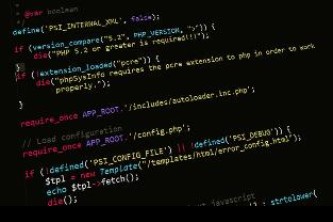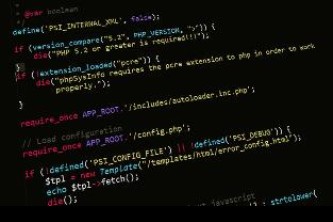如何使用Python打开JSON文件路径
在Python中处理JSON文件是一项常见任务,无论是读取配置文件、解析API响应还是处理数据交换格式,本文将详细介绍如何使用Python打开JSON文件路径,包括基本步骤、常见错误处理以及实用示例。
基本步骤
要使用Python打开JSON文件路径,主要涉及以下步骤:
- 导入
json模块 - 使用
open()函数以读取模式打开文件 - 使用
json.load()或json.loads()解析JSON数据 - 处理完成后关闭文件(或使用
with语句自动管理)
实现代码
使用with语句(推荐)
import json
file_path = 'example.json' # 替换为你的JSON文件路径
try:
with open(file_path, 'r', encoding='utf-8') as file:
data = json.load(file)
print("成功读取JSON文件:")
print(data)
except FileNotFoundError:
print(f"错误:文件 '{file_path}' 未找到")
except json.JSONDecodeError:
print(f"错误:文件 '{file_path}' 不是有效的JSON格式")
except Exception as e:
print(f"发生未知错误: {e}")
传统文件打开方式
import json
file_path = 'example.json' # 替换为你的JSON文件路径
file = None
try:
file = open(file_path, 'r', encoding='utf-8')
data = json.load(file)
print("成功读取JSON文件:")
print(data)
except FileNotFoundError:
print(f"错误:文件 '{file_path}' 未找到")
except json.JSONDecodeError:
print(f"错误:文件 '{file_path}' 不是有效的JSON格式")
except Exception as e:
print(f"发生未知错误: {e}")
finally:
if file is not None:
file.close()
处理不同路径情况
相对路径与绝对路径
# 相对路径(相对于当前工作目录)
relative_path = 'data/config.json'
# 绝对路径
absolute_path = '/Users/username/projects/app/data/config.json'
# 使用os.path处理路径
import os
file_path = os.path.join('data', 'config.json') # 自动处理路径分隔符
处理JSON字符串内容
如果JSON内容已经作为字符串存在(例如从API获取或用户输入),可以使用json.loads():
import json
json_string = '{"name": "Alice", "age": 30, "city": "New York"}'
try:
data = json.loads(json_string)
print("成功解析JSON字符串:")
print(data)
except json.JSONDecodeError:
print("错误:输入的字符串不是有效的JSON格式")
高级用法
处理大型JSON文件
对于大型JSON文件,可以使用ijson库进行流式处理:
import ijson
file_path = 'large_file.json'
try:
with open(file_path, 'rb') as file:
# 逐项处理JSON数组
for item in ijson.items(file, 'item'):
print(item)
except Exception as e:
print(f"处理大型文件时出错: {e}")
自定义JSON编码器/解码器
import json
from datetime import datetime
class DateTimeEncoder(json.JSONEncoder):
def default(self, obj):
if isinstance(obj, datetime):
return obj.isoformat()
return super().default(obj)
# 自定义编码示例
data = {"timestamp": datetime.now()}
json_str = json.dumps(data, cls=DateTimeEncoder)
print(json_str)
常见错误及解决方案
-
FileNotFoundError: 文件路径不存在
- 解决方案:检查路径是否正确,使用
os.path.exists()验证
- 解决方案:检查路径是否正确,使用
-
json.JSONDecodeError: 文件内容不是有效的JSON
解决方案:验证JSON格式,可以使用在线JSON验证工具
-
UnicodeDecodeError: 文件编码问题
- 解决方案:明确指定编码(如
encoding='utf-8')
- 解决方案:明确指定编码(如
-
PermissionError: 文件权限不足
解决方案:检查文件权限或尝试以管理员身份运行
完整示例
以下是一个完整的示例,展示如何读取JSON文件并处理其中的数据:
import json
import os
def read_json_file(file_path):
"""读取JSON文件并返回解析后的数据"""
if not os.path.exists(file_path):
raise FileNotFoundError(f"文件 '{file_path}' 不存在")
if not os.path.isfile(file_path):
raise ValueError(f"'{file_path}' 不是一个文件")
try:
with open(file_path, 'r', encoding='utf-8') as file:
data = json.load(file)
return data
except json.JSONDecodeError as e:
raise ValueError(f"文件 '{file_path}' 包含无效的JSON: {e}")
except Exception as e:
raise RuntimeError(f"读取文件时发生错误: {e}")
# 使用示例
if __name__ == "__main__":
try:
# 替换为你的JSON文件路径
file_path = 'data/config.json'
config_data = read_json_file(file_path)
print("成功读取配置文件:")
for key, value in config_data.items():
print(f"{key}: {value}")
except Exception as e:
print(f"错误: {e}")
使用Python打开JSON文件路径是一个简单但重要的技能,通过本文介绍的方法,你可以:
- 安全地打开和读取JSON文件
- 处理各种路径情况(相对/绝对路径)
- 优雅地处理常见错误
- 扩展功能以处理更复杂的需求
记住始终使用with语句来自动管理文件资源,并适当处理可能出现的异常,这将使你的代码更加健壮和可靠。







还没有评论,来说两句吧...